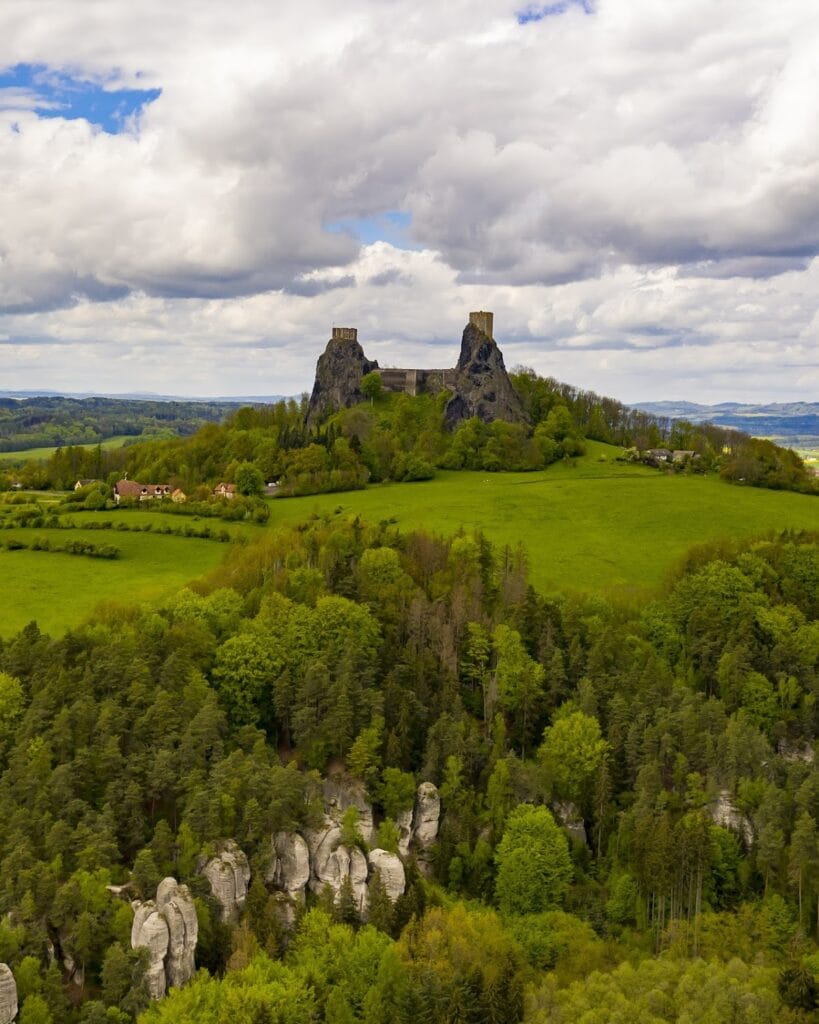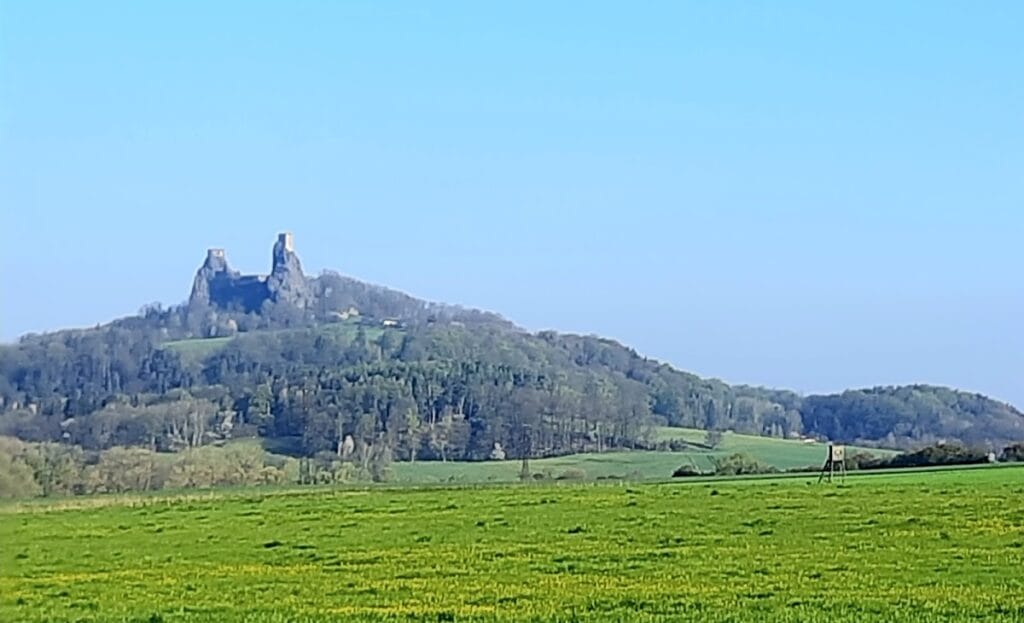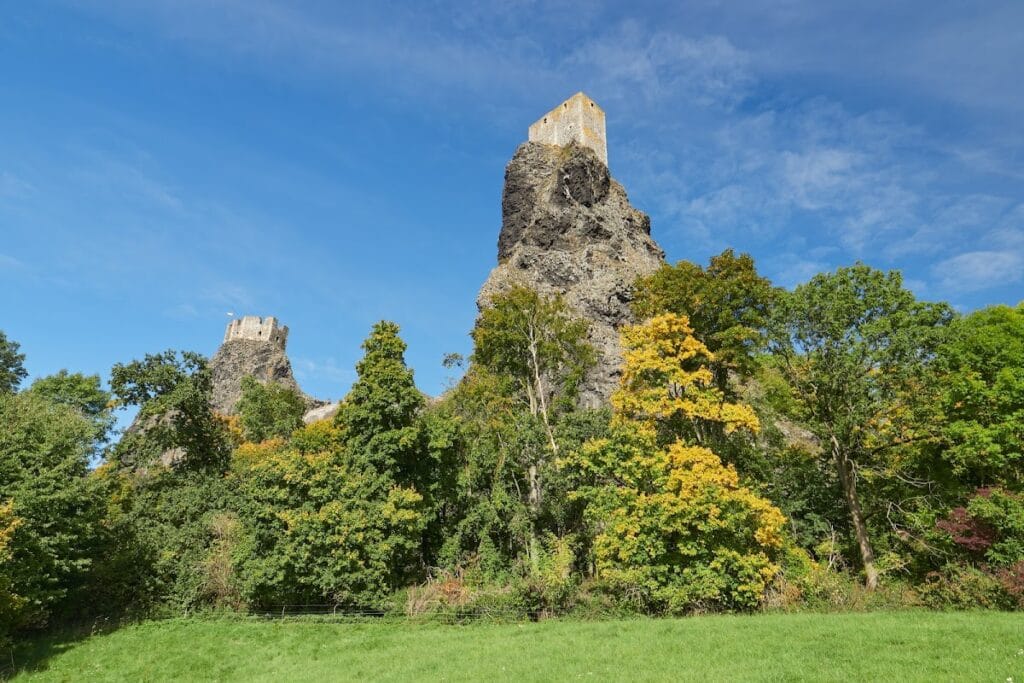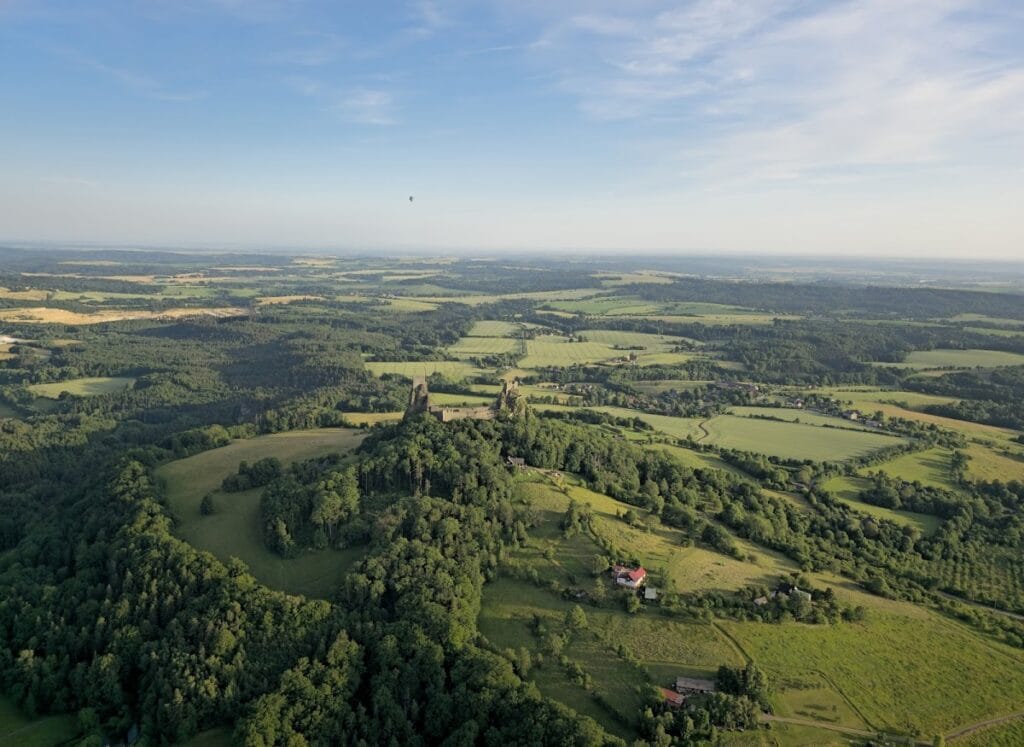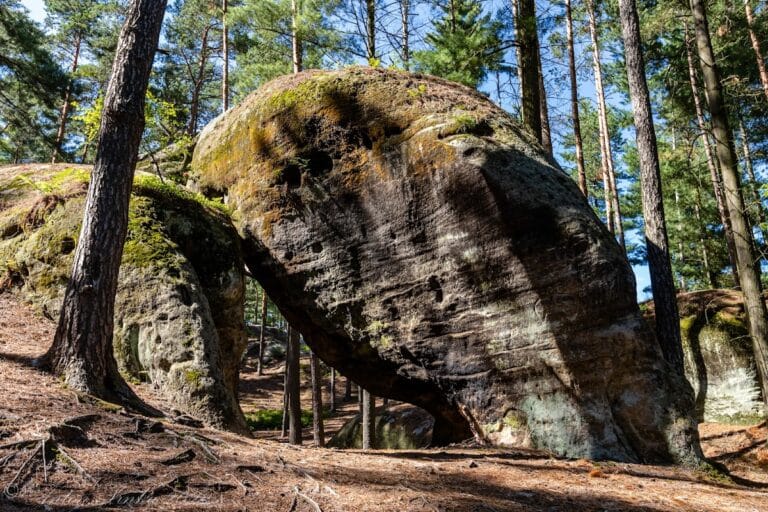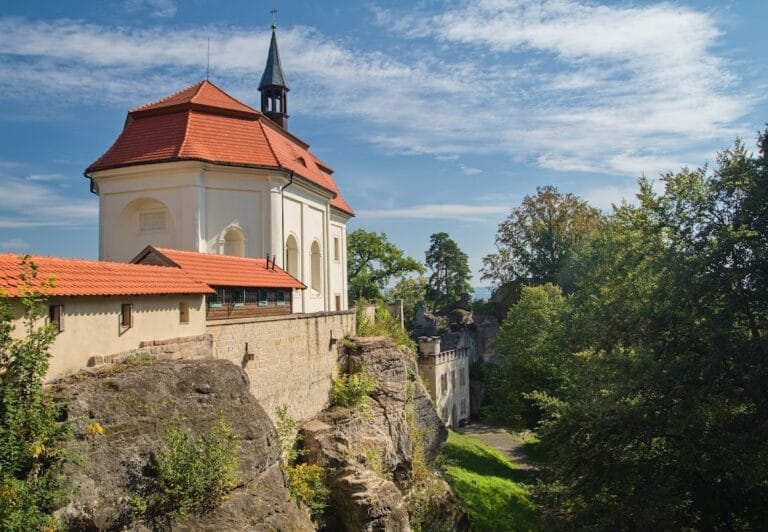Trosky Castle: A Medieval Fortress in the Czech Republic
Visitor Information
Google Rating: 4.6
Popularity: High
Google Maps: View on Google Maps
Official Website: www.hrad-trosky.cz
Country: Czechia
Civilization: Medieval European
Remains: Military
History
Trosky Castle stands near the village of Rovensko pod Troskami in the Czech Republic. It was constructed by the medieval Bohemian civilization and established during the 14th century, although archaeological evidence suggests an earlier foundation. The castle is traditionally associated with Čeněk of Wartenberg, considered its founder, though he had died before the first written mention of the castle in 1396 and no longer owned it at that time.
In its early history, ownership of Trosky passed through several hands. During the early 1390s, the castle became royal property under King Wenceslaus IV. Soon after, Otto III of Bergau acquired the fortress, passing it to his son Otto IV, who was noted for attacking the Opatovice monastery. Subsequent proprietors included Jan of Bergov and Jan Zajíc of Hazmburk, who integrated Trosky into the Kost estate. Later ownership transitioned to noble families such as the Šelmberk, Bibrštejn, Lobkowicz, and Smiřický lineages.
Throughout the 15th century, Trosky played a significant military role during the Hussite Wars as a prominent Catholic bastion. It successfully withstood several sieges, notably in 1424, 1428, and 1469. Its resistance came to an end in 1469 when King George of Poděbrady’s forces captured the castle after a prolonged defense. After this period, the castle ceased to serve as a noble residence, with estate officials managing the property instead.
The Thirty Years’ War marked a turbulent chapter for Trosky. The castle was alternately held by Swedish and Imperial armies during the conflict, ending with its destruction by Imperial forces in 1648 who set it ablaze. Following this devastation, the castle was abandoned and gradually fell into ruin.
Ownership after the castle’s decline rested with the Wallenstein family until 1821. The property was then sold to Jan Lexa of Aehrenthal, who initiated romantic-era alterations, including an unfinished staircase addition to one of the towers known as Panna. The Czech state acquired the ruins in 1925, embarking on restoration efforts that began in the early 20th century and continued into the modern day. These efforts included structural reinforcement and installation of visitor facilities. More recent renovations around 2000 and early 2024 improved access within the Baba tower and added an observation platform.
Since 2002, Trosky Castle has been recognized as a national cultural monument of the Czech Republic. Its distinctive silhouette atop volcanic rock formations has become an emblem of the Bohemian Paradise region. The castle has also appeared in contemporary culture, serving as a setting in the video game Kingdom Come: Deliverance II, which is set during the early 15th century.
Remains
Trosky Castle is uniquely perched atop two prominent basalt volcanic plugs that form its foundation. These rocks, remnants of an ancient volcano, rise sharply and gave the castle its characteristic twin towers named Panna (Maiden) and Baba (Crone). The Panna tower occupies the higher peak at 57 meters, while the Baba tower stands on a slightly lower formation at 47 meters.
The castle’s layout centers around these two main towers connected by an elongated castle core that houses two palaces between them. This arrangement reflects a common medieval design where dual towers balance a fortified complex, providing both defense and residential space. The entire complex is enclosed by thick curtain walls measuring between 1.5 and 2 meters in thickness and rising up to 15 meters high.
The Baba tower is constructed on a six-sided, or hexagonal, plan. Inside, the tower is divided by internal partitions into four smaller chambers. Its entrance, located on the northern side, leads first into an antechamber which grants access to the other rooms, all illuminated by sizeable windows. This tower’s interior spaces were carefully arranged to make use of natural light and internal divisions within a confined area.
The Panna tower is roughly square in shape and originally featured a pointed arch entrance on its western side at the first-floor level. Over time, it was extended eastward, and its ground floor compensates for the varying height of the volcanic terrain beneath. Residential quarters were situated on the first floor, while many of the current window shapes result from 20th-century reconstruction efforts aiming to stabilize and restore the tower’s fabric.
Between the two towers lies the castle core, which formed the heart of the complex. The eastern entrance led into this area, which contained a large two-room palace with residential quarters on its third floor. The central part of the core was the highest and functioned as a courtyard, while the western side featured a smaller palace predominantly made of wood. This smaller building housed at least three rooms, including a smithy that remained active until the 1600s, demonstrating the site’s prolonged economic and defensive use.
Along the castle’s northern side was the forecourt, protected by a fortified wall and containing a two-room economic building near the main gate. Archaeologists have found remains of a furnace in this area, indicating metallurgical or craft activities close to the castle’s entrance.
Neither of the castle’s two gatehouses was supplemented by moats or ditches, suggesting reliance on the natural defensive advantage provided by the volcanic rock formations. The basalt rocks themselves show signs of weathering caused by frost over centuries, including cracks and sheet-like patterns known as columnar jointing—geological features that reflect the castle’s volcanic origins.
Today, the ruins include remnants of both towers, extensive sections of curtain walls, gate structures, and foundations of the palaces. Restoration has focused on stabilizing the volcanic rock bases and the castle’s masonry, carefully preserving what remains while enabling safe access. Modern additions such as staircases and observation platforms allow exploration of the towers, ensuring that these remarkable medieval remains continue to illustrate the castle’s historical and geological significance.
